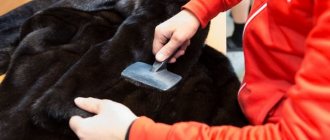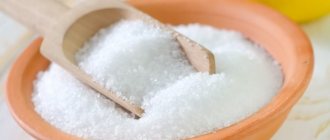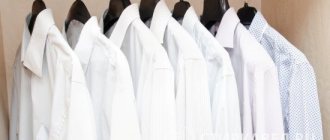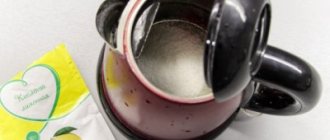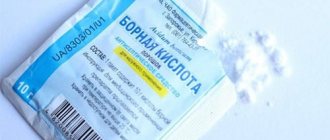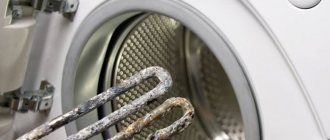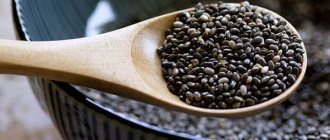05/18/2020 Nataly Drozdova (397 articles)
Wearing white socks is a luxury that we, unlike our recent ancestors, can afford, because we don’t have to deal with the consequences of ruining our manicure and the skin of our hands by washing this fashionable accessory by hand! Or not?
Dark heels and toes, gray spots that eat deeper and deeper into white knitwear are a pressing problem of our generation, despite advanced washing machines and all kinds of laundry detergents.
But how was this problem solved before? Let's ask grandmothers and mothers!
What substances should not be used to wash newborn clothes?
Two types of aggressive bleaches for babies:
- Chlorine based. The bleach contained in the composition harms the fibers of the fabric. If used incorrectly, the bleach will burn the product. Often this component provokes allergic reactions for infants.
- Optical compositions. These bleaches help fade stains, but do not erase them completely. The components of the product eat into the material and are difficult to wash out of the fibers. Particles of the substance in contact with the skin of a child cause friction and a negative effect. Items treated with the mixture require thorough rinsing.
- It is forbidden to use ammonia, vinegar, acid in their pure form in large quantities.
The use of any whitening products requires strict adherence to proportions. Following the rules will help avoid damage to the skin of children and adults when washing.
It’s easy to make your child’s clothes crystal white.
The main condition is to use aggressive compounds on delicate fabrics with caution at home. It is worth using popular oxygen bleaches
The article has been verified by the editors
Method 6 - peroxide
Hydrogen peroxide can be used to whiten gray or yellowed lace underwear. It is even suitable for synthetic fabrics that cannot be boiled. Use it like this:
- Take two liters of warm water. Add 5 tablespoons of peroxide to it, stir the solution thoroughly.
- Items are pre-washed by hand or in a machine. After that, they are placed in this solution and left for half an hour.
- After this, the clothes are removed from the solution and rinsed well.
There is another way to bleach things with hydroperite. They use it like this: take two liters of boiled water at a temperature of up to 70 degrees, add a tablespoon of soda ash, as well as a teaspoon of peroxide. Place the item in the resulting mixture for a quarter of an hour, after which it is thoroughly rinsed in regular cool water.
How to wash it properly?
Clothes can be easily washed at home either by hand or in a washing machine.
To add whiteness to an office blouse, remove stains from white T-shirts, or save gray underwear, you must first use soaking using chemical components or folk recipes.
The soaking and washing temperature should not exceed that recommended on the branded tags of the items. Cotton fabrics can even withstand boiling, when washing linen items requires lower temperatures. When machine washing items made from artificial materials, select the washing mode for synthetic fabrics. For mixed fabrics, you can use a wash similar to synthetic items.
The degree of soiling and texture of the fabric determines where to wash white items. You can use the car in the following temperature conditions:
- 40 degrees – giving things freshness.
- 60 degrees – gets rid of stains and yellowing of clothes.
- 95 degrees – washes heavily soiled cotton, linen and calico. Children's clothes and diapers are often washed in this mode.
To ensure a high level of whiteness of clothes, proprietary brand washing powders and bleaches should be used.
In addition to soaking and washing, an effective way to remove dirt and stains is boiling. You can boil the laundry before washing and after washing if the stains have not disappeared. You can only boil items made from cotton and linen fabrics. Do not place items in already boiling water, otherwise the contamination will become even more ingrained into the fabric.
Delicate fabrics are dried in shaded, ventilated places. An outdoor shed or balcony would be a great place to dry similar items.
Even expensive clothes can lose their snow-white color immediately after the first wash. The first places to get dirty, turn yellow and fade are the cuffs, collar, and pockets: these parts of the product are especially easily soiled, and after washing they can lose their original luster.
In some cases, any shampoo will be able to wash the gray collar of a white shirt. To remove dirt, shampoo is applied liberally to the stain and rubbed with a brush. For enhanced effective cleansing, soak the shirt in hot water. This approach to washing will restore its former whiteness. To get rid of the remaining shampoo, spin it through the washing machine again.
If the shirt has not been washed after the first wear, it will be difficult to remove gray marks on the clothing. To completely remove dirt, clothes are soaked for an hour with the addition of a concentrated product.
It is difficult to wash items from your outer wardrobe, especially if they are white. A jacket, coat, or white down jacket tends to get dirty quickly. Dirt is especially noticeable on collars, pockets and sleeves. The dry cleaning option is not always a budget option. Therefore, many people prefer to wash such items at home.
Washing a down jacket requires a competent approach. It is better to wash such items separately from other clothes. After treating the stains, the down jacket is turned inside out and placed in the washing machine. To prevent the down from matting, place several tennis balls inside the down jacket. When washing, use washing liquid with the addition of a mild conditioner. The washing mode is set to delicate, and the water temperature is up to 40 degrees. It is advisable to select the minimum speed for the spin mode. It is recommended to wear gloves when removing the washed item to avoid contamination from your hands on the clothing.
In order to prevent stains from appearing on clothes, whites are washed separately from colored ones. If such washing could not be avoided, then potassium permanganate does an excellent job of removing colored stains from white things. Dissolve half a glass of powder and potassium permanganate so that the solution acquires a pink tint. Then the solution is added to the basin with the item and sealed hermetically for a couple of hours. After the procedure, the item must be rinsed thoroughly.
To eliminate stains on clothes, prepare a mixture of laundry soap, chopped shavings, half a glass of regular salt, a small amount of starch, citric acid and water. Cover the stain with a thick paste and let the item sit for some time. Finally, the product is thoroughly rinsed.
Solutions of ammonia and hydrogen peroxide can also save a faded item.
To apply methods for bleaching a delicate white item, you can first apply a little product to a similar material and observe. If the fabric has changed structure, then the risk will not be justified - it would be safer to take the product to the dry cleaner for professional washing.
How to keep socks white
In order for them to always be white, it is enough to follow a number of simple rules:
- Make sure your feet are clean before putting them on. A dirty foot can stain the fabric no less than external influences in the form of dirt or sand.
- Avoid wearing socks with dark shoe insoles. When exposed to moisture, it colors the fibers, and the paint settles firmly inside.
- Try not to wear underwear for more than one day, and wash them immediately afterwards.
- Before washing, soak your laundry using one of the tips above. Pre-soaking often eliminates further manipulation.
- Pay attention to the label and composition of the material. Wool, synthetics, and cotton require different care methods.
- Wash light-colored fabrics separately from colored ones. Even faded colors can leave pigment on light-colored fabrics.
- Follow the washing schedule. Cotton and synthetic fabrics are washed at a maximum temperature of 40 degrees.
- Products treated with acid for bleaching must be dried in fresh air, avoiding exposure to ultraviolet radiation. The sun's rays leave bright yellow spots, which are almost impossible to get rid of in the future.
Share what whitening methods you use in the comments. Don't forget to join us on social networks and share the article with your friends.
How to use for whitening?
There are 5 ways to use the product:
- Soak. Allows you to soften dirt so that it is easier to remove when washing. For a whitening effect, dissolve 1–2 tbsp in 2 liters of water (hot). spoons of boric acid. Things are placed in the solution and left for 2 hours.
- Removing fresh stains. If fruit juice, blood or coffee accidentally spills on white linen, sprinkle the area with boron powder crystals and add a few drops of water. Then rub the stain lightly with a brush and wait until the product dries completely. Then the procedure can be repeated, and if the laundry is clean, rinse it in water or brush off the white dust (in case washing is impossible). Liquid boric acid can be dropped onto a cotton swab and applied as a compress to the area of contamination.
- Odor removal and whitening. To remove urine stains and mold from white linen, dissolve 10 g of boric acid in 2 liters of hot water and add 0.5 cups of vinegar. Things are placed in the solution for an hour. Then wash and dry.
- Removing old stains. Dissolve 5 tbsp in 2 liters of hot water. spoons of ammonia and boric alcohol. Place the laundry there and, stirring occasionally, keep until the water cools completely. Then wash with powder.
- Use in washing machine. When washing white laundry, add 0.5 cups of boric acid to the laundry detergent. Wash at 60–90 degrees. This method will help remove yellowness.
Whitening socks, knee socks, children's tights
To make your socks and tights snow-white again, you need to do the following:
- Wash items with soap.
- Fill clean socks and tights with hot water with the addition of 2 tbsp. spoons of boric acid.
- Leave on for 30 minutes and then scrub lightly with a brush.
- Rinse in hot water.
We recommend: Using baking soda, salt and vinegar to care for car interiors
Bleaching underwear and tulle
Products of this type require careful care. And delicate boric acid is ideal for whitening them.
Instructions:
- Fill a bowl with slightly warm water.
- Dilute boric alcohol in it at the rate of 2 tbsp. spoons per 1 liter.
- Soak tulle or cotton underwear for 3 hours.
- Wash as usual.
Whitening bed linen and towels
The product shows the greatest activity in hot water. To bleach bed linen and towels, it is recommended to use boiling:
- Fill a large saucepan with 5–7 liters of water.
- Add 5 tbsp. spoons of washing powder and boric acid.
- Place linen and towels inside.
- Place the pan on the fire and bring to a boil.
- Continue boiling the laundry for 30 minutes.
- Leave in the pan until cool.
- Rinse thoroughly.
Good old ways: boiling and soaking in white
Despite the lack of washing machines and expensive modern laundry detergents, the bed linen of our grandmothers and mothers was snow-white and smelling pleasant. So what is the secret of such success? There are several very effective methods that our parents actively used and thanks to which the problem of how to wash washed bed linen simply did not arise.
This is a great way to return your pillowcase, duvet cover and sheets to their former whiteness and freshness. To do this, you need to soak the laundry in a solution that is prepared in the ratio of 1-2 tablespoons of starch or baking powder per 5 liters of water.
Another option is to put the starch directly into the washing machine drum. Most of those who have tried this method praise it and say that the effect is no worse than when rinsing in a solution.
Boric acid
This remedy can be easily found at the pharmacy. It is used by housewives to enhance the cleanliness of things and is a kind of “conditioner” during the rinsing process. To do this, 1-2 tablespoons of boric acid must be diluted in 3 liters of fairly warm, but not hot water. Finally, rinse the laundry in clean water.
Ammonia
In especially severe cases, when washing washed bed linen, ammonia can come to your aid. This product is very effective when pre-soaked. The most important thing is that the water is hot enough, about 70 degrees.
In addition, a solution with ammonia is very effective in boiling down bed linen. The most important thing is not to be in the kitchen at this moment, as harmful fumes are released that can harm your health.
Soda and salt
These two ingredients are found in every housewife's everyday life. In addition to their nutritional properties, soda and salt can whiten washed bed linen. In its pure form, soda can be added directly to the washing machine, and for pre-soaking it is best mixed with shavings from laundry soap and hydrogen peroxide.
The laundry is soaked in this solution for several hours, after which it is washed as usual.
You can do without boiling. The second method known to all housewives is soaking in white. Bleach contains chlorine, so be prepared to wash it yourself. You cannot add such products to the machine.
What is better - boiling or soaking in white? Boiling does the job more effectively, but requires more effort. It is easier to soak the laundry, but it is not a fact that after this it will be snow-white and without holes. You can decide for yourself which method is better only by trying both.
Let's boil
What you will need:
- large capacity (necessarily enameled/galvanized);
- white towel or cloth;
- laundry powder/soap;
- ammonia.
https://youtube.com/watch?v=CRNCPJKsozg
Instructions
- Line the bottom of the selected container with a white cloth.
- Make a soap solution. If there are “blots” on the sheet, wash them with laundry soap.
- Send the laundry to the boiler. Try to straighten it out as much as possible.
- Pour enough soap solution to cover the laundry.
- Add a tablespoon of ammonia. You can skip this step if there is no dirt on the sheet.
- Boil for about an hour. Be sure to use a wooden stick for stirring.
Soaking
What you will need:
- basin;
- white;
- powder/laundry soap.
Instructions
- Prepare a soap solution using powder or laundry soap.
- Add white: for every 3 liters - a tablespoon of the product.
- Soak the bedding for 20 minutes.
- Rinse thoroughly by hand.
Since it is not always possible to bleach things white, soaking is combined with boiling, although after soaking they are boiled for less than half an hour. “Whiteness” can only be used for cotton sheets; other fabrics are afraid of chlorine. For them, it is better to prepare another solution - laundry soap and a couple of drops of ammonia.
A few more ways to whiten socks
- If stains appear on white socks, but they cannot be soaked because of the pattern or embroidery, then prepare the following bleach: a little washing powder is mixed with a small amount of dishwashing detergent until foam forms. This composition is applied to contaminated areas and left for no more than 10 minutes. Then wash well.
- If your white socks are very dirty, you can use mustard powder. It is applied to contaminated areas and left for some time. Then the socks are loaded into a washing machine, into the drum of which mustard powder was also poured - about 50 g. The washing mode is chosen so that the water temperature does not exceed 40°.
- If white socks are washed in the washing machine as usual, then add 200 g of baking soda to the rinse aid compartment when rinsing.
But what to do if the white socks are not washed? Of course, this can also happen if the socks are worn out.
Then you need to buy new white socks and take care of them from day one. And take note of all the methods mentioned above. After all, it’s quite possible that you’ll be luckier next time.
Date: 11/11/2015.
Photo: pixabay.com
Some tips for maintaining whiteness
Proper care of white items is needed from the first day of purchase. Only if washed properly will the products last a long time, and you will not have to resort to extreme bleaching methods.
Simple rules to follow:
- Wear white socks only on clean feet - it sounds stupid, but this is precisely why dirt eats into the fabric.
- Also clean the insoles of your shoes frequently.
- Wash your socks every time you leave the house.
- Do not put on underwear or T-shirts until the deodorant has dried. Traces from industrial products can be difficult to bleach.
- Carefully wash your bra straps; it is better to unfasten them if possible.
- Do not wash white with color - the main rule.
- Don't put off washing until later.
Preventing grayness and yellowness, or at least delaying their appearance, is much easier than removing stubborn stains. Don’t skimp on boric acid and don’t be lazy, and then your underwear, T-shirts, T-shirts and home textiles will shine white to the envy of your friends.
Hydrogen peroxide for whitening socks
Socks, as in previous cases, are first washed with laundry soap.
Method 1
- Then pour 2-3 liters of water into a small container and add 3 tablespoons of hydrogen peroxide and a tablespoon of ammonia.
- Soak socks in this solution for a day.
- Then wash again by hand or in the washing machine with bleach powder.
Method 2
If white socks have a colored pattern, then you should not soak the socks in bleach solutions. In this case, remove the stain itself directly, after washing the socks well before doing so. To do this, prepare the following stain remover:
- A teaspoon of hydrogen peroxide 3% is mixed with a small amount of toothpaste.
- Apply the composition to the stain and leave for several minutes.
- Then the socks are rinsed well in clean water. The stain should disappear.
Cleaning the soles
Poor-quality insoles, fading inner surfaces of shoes, and sneakers that have been exposed to rain can leave permanent marks on the soles of socks. To wash black soles, you need to use strong concentrated bleaches. This could be Domestos, “Belizna” or any other product that contains chlorine.
To remove dirt from the soles, Domestos needs to be diluted halfway with water. With other bleaches, you should follow the proportions given in the instructions. Soak a sponge in the product solution and thoroughly blot particularly dirty areas with it. After this, you can put the socks in the washing machine.
Natural antiseptics
No throat disease is complete without the use of antiseptics. Antiseptics are able to kill pathogenic bacteria and viruses, thereby destroying the cause of the disease. Natural antiseptics include calendula, thyme, yarrow, and chamomile. You need to gargle with decoctions of these herbs 4-5 times a day.
Sage and oak bark are good for sore throats, but they are not suitable in all situations, as they dry out the mucous membrane. They should be used for purulent tonsillitis to cleanse the tonsils of pus. Here you can gargle with a solution of aloe or Kalanchoe juice. They are excellent at removing purulent discharge. One drawback is that such rinsing solutions are quite bitter and unpleasant.
If, on the contrary, the throat feels dry and irritated, or suffers from a dry cough, then gargling with a decoction of marshmallow or licorice will help soften the mucous membrane; they contain mucus that moisturizes the surface of the pharynx and creates a protective film on it.
What does Persol consist of?
“Persol” is the trade name for sodium percarbonate. It is a white crystalline powder, about 10% of the composition of which is active oxygen (with exceptional reactivity). It reacts and begins its activity in the presence of water. It is oxygen that copes with the task of whitening and removing stains.
Oxygen in the powder is associated with sodium and hydrogen. During the process of soaking or washing, they disintegrate and no longer play any role. Only oxygen works energetically. This is what gives the product its name: oxygen bleach.
Sodium percarbonate is included in some synthetic detergents, including expensive ones. Also available separately, in small packs.
It is important that the bleach does not contain chlorine, a caustic substance that can cause an allergic reaction and even poisoning. In addition, chlorine-containing bleaches destroy fabric fibers and have a negative impact on the environment.
This is not the fault of Persol at all.
Indications and contraindications for whitening
Your teeth should have a fairly strong and thick layer of enamel. Only a dentist can determine its condition. The yellow coating should be superficial. If it is deep, then teeth whitening methods will not bring you the desired result.
Contraindications:
- Increased sensitivity of teeth;
- Allergy to hydrogen peroxide;
- Caries;
- Damage to enamel.
So, if the dentist has determined that there are no contraindications to the procedure, you can perform home teeth whitening, saving time and money, but always proceed from the principle of “do no harm.”
Whitening Precautions
- Most fabrics are damaged by aggressive bleaching agents. Therefore, you should not soak things in them for a long time, and also do not exceed the permissible amount of drugs.
- If there are rust stains on things, then when using chemical bleaches, the rust can move to all the laundry, which will further ruin its appearance.
- Items with metal fittings should not be soaked in high temperature water. 40 degrees is enough.
- Bleaching of laundry must be done in plastic basins. Chips on enamel cookware may react undesirably with bleaching agents.
- Bleach and other chlorine-containing bleaches should be used only as a last resort, so as not to expose the fabric to the negative effects of this substance.
- Before bleaching your laundry at home, read the labels on the items. If they have an icon in the form of a triangle crossed out by two lines, then this procedure cannot be carried out.
General recommendations
You can restore the snow-whiteness of your bra, grace, knickers and panties using bleaching, but thin fabric requires careful handling. For high-quality bleaching of underwear, you need to adhere to some general rules.
Before bleaching, carefully analyze the labels, which indicate the maximum water temperature and restrictions on the use of certain products. A natural and easy way to fix the problem is to use bleach. The main thing is to choose the right chemical to remove stains, restore pure color and not spoil the laundry. “Hard” bleaches are contraindicated if products are made of silk, synthetics, lycra, or lace. For such laundry it is necessary to choose soft detergents with a gentle effect. White items are soaked, washed, boiled and bleached separately from colored items
Use bleaching agents with extreme caution if there are colored elements (prints, embroidery, appliqués, bows, etc.). When boiling or bleaching in hot water, check whether there are small parts in the laundry that cannot be exposed to high temperatures
Bleaching panties is not a problem, but bras sometimes contain plastic inserts that are best removed while washing. To enhance the snow-white effect, blue is used. The main thing is not to overdo it, otherwise the white color will take on a dirty blue or gray tint. It is advisable to remove stubborn stains using stain removers or home remedies before washing, and not after. To prevent laundry from becoming hard, to maintain softness and to last longer, it is recommended to use softening rinses, conditioners or vinegar. You need to wash intimate clothing more often, without delay, so that old dirt does not eat into the fabric. It is better to avoid machine washing; delicate fabric will stretch, deform, become thinner and tear in vulnerable places. After washing, the products are shaken, lightly squeezed, and if necessary, blotted with a towel, but do not twist. Bleached items should be dried in the shade, away from sources of intense heat. Delicate items made from thin fabrics should not be dried on a hot radiator. Do not dry clothes in the kitchen, where microscopic particles of soot, grease or dust settle on the fabric.
It is better not to send underwear to the laundromat and avoid machine washing. With proper care, you will preserve your delicate products' seductive appearance, comfortable softness and pristine whiteness for a long time.
Rules for washing white clothes
There are several basic rules that must be followed to ensure that the products remain fresh and remain white for as long as possible.
Sort your laundry. Before loading laundry into the washing machine, separate white items from colored items. If this is not done, as a result, traces of colored fabrics may remain on white clothes, which will completely ruin them.
Maintain the correct temperature. In addition to the fact that the laundry is sorted by color, it must also be distributed by type of fabric. So cotton, silk, synthetic and wool products need different temperature conditions. It is usually indicated on the label. For example, fabrics containing synthetic fibers cannot be washed in water above 30 degrees and boiled. If you ignore this rule, you will only speed up the aging process of white things.
Set the correct washing mode. Sometimes hand washing does not give the same effect as machine washing. Therefore, after loading things into the washing machine, you need to accurately set the washing mode for a certain type of fabric.
Soak your laundry. The soaking method is used for heavy soiling, certain types of stains and yellowed items. This is done like this: a basin is filled with water, washing powder, bleach or stain remover is added, where the clothes are immersed for 5 hours. Then you need to take it out and wash it as usual.
Soften the water. Most of us have hard water running through our pipes. In order for washing to bring the desired result, the water must be softened. “Domol” or “Calgon” is added to the machine. If you wash by hand, pour baking soda into the basin at the rate of 3 tbsp. l. for 10 liters of water.
Use bleach. White items should be washed with special tablets or bleaching gels, which are placed directly into the drum with the items.
It is important to note that each type of fabric has its own bleach
If you don’t have a purchased product at hand, you can use improvised materials. For example, add 5 tbsp to a container with water at 30 degrees. l. hydrogen peroxide. Soak the laundry in the liquid. After a couple of hours, rinse thoroughly.
Boil your laundry. Linen and cotton fabrics can be boiled. This method will cope with yellowness and gray tints on wardrobe items. The process looks like this:
- pour 10 liters of water into the pan;
- add 10 g of white;
- add 10 g of powder with a whitening effect;
- place the washed product in a container with the prepared liquid and boil for 20 minutes;
- then remove the clothes and rinse.
If once wasn't enough. Boiling can be repeated.
Popular washing gels
The advantage of gel products is that they have a gentler effect compared to dry powders. After washing, they are easily removed from clothes without leaving any traces, which means there is no contact with the skin. Doctors recommend using liquid gels primarily for people who are prone to allergies. To understand which washing gel is the best, we suggest that you familiarize yourself with the most popular liquid detergents.
Persil Expert Gel
Most consumers choose Persil Expert Gel among gel laundry detergents.
This tool has several advantages:
- activates only in cold water;
- convenient packaging with dispenser;
- smoothes fabric fibers;
- colored clothes retain their original shade even after several washes;
- copes with most contaminants.
The disadvantages include:
- high consumption;
- high price;
- contains aggressive components that can cause allergic reactions.
This liquid laundry detergent can be considered as an alternative to traditional detergent. It not only copes better with stains, but is also safer for human health and the environment.
Wellery DELICATE Color
This product can be used to wash delicate fabrics and woolen items.
The product has the following advantages:
- has convenient and beautiful packaging;
- contains only safe components;
- thick gel texture;
- light and pleasant aroma;
- gently washes fabrics;
- prevents “washing out” of color.
There are few downsides to this product:
- difficult to find on sale;
- high price.
If the appearance of the things that your loved ones will wear is important to you, then we advise you to pay attention to this powder. https://www.youtube.com/embed/NWt1PtIpvIU
Features of removal from various fabrics
Before you begin removing yellow stains, it is important to read the fabric composition information on the manufacturer's label. Depending on what material the item is made from, a specific bleaching method is selected.
Ignoring or making mistakes in choosing stain removal can cause final damage to your favorite item.
Depending on what material the item is made from, a specific bleaching method is selected. Ignoring or making mistakes in choosing stain removal can cause final damage to your favorite item.
Synthetics
Elastane, polyester, spandex and other synthetic materials can be removed from yellow stains in several ways:
- Hydrogen peroxide solution (the product has an instant whitening effect). To clean using this method, treat the stain with a solution of hydrogen peroxide, wait ten minutes, and then put the item in the wash.
- Aspirin tablets. To evaluate the positive, whitening effect of this method, the problem area of the fabric is generously moistened with water and sprinkled with powder from crushed Aspirin tablets. The treated item is left for three hours, after which the item is sent for washing.
A secret from housewives: this product perfectly washes clothes from yellow sweat stains.
Fur
Treating a white fur item with bulk absorbents (for example, potato starch or semolina) will help quickly remove yellow stains from your favorite item.
Everything is very simple: just sprinkle the dirt with absorbent powder, lightly moisten it with a spray bottle, and then comb the fur, removing the powder particles along with the dirt.
Silk
Delicate silk fabrics require special attention. A solution of vodka and water will help remove yellow stains from white silk.
Algorithm of actions:
- Stir water and vodka in a glass (ratio 1:1);
- Use the resulting solution to gently wipe off the dirt;
- After two hours, the clothes are washed as usual.
Wool
Laundry soap will help remove yellow stains from white woolen clothes; to do this, rub it on a grater.
Then mix with a small amount of water and apply the resulting product to the stain. After three hours, the woolen product is washed as usual.
A mixture of glycerin, ammonia and water will also help eliminate yellow marks on white wool clothes. To prepare a solution for 200 ml of warm water, you need to take 20 g of glycerin and 10 g of ammonia.
Cotton
The boiling method will help remove yellow stains from white cotton fabric.
Algorithm of actions:
- pour two or three tablespoons of grated laundry soap into a large saucepan, fill the container with water, bring to a boil and the soap is completely dissolved;
- clothes are dipped into the resulting hot solution and boiled for half an hour;
- Afterwards, take out the white items and rinse them thoroughly in clean, cool water.
In order to remove very old, stubborn stains, the boiling process is extended to two hours.
Linen
Ammonia and salt will help remove yellow stains from white linen fabric as quickly as possible.
Algorithm of actions:
- Dissolve a teaspoon of ammonia and salt in a glass of warm water.
- The yellow stain is generously moistened with the resulting solution, after which the item is left alone for three hours.
- The final step is to wash white linen clothes as usual.
Jeans
Hydrogen peroxide and vinegar will help remove yellow stains from thick denim.
Algorithm of actions:
- hydrogen peroxide and vinegar are diluted in a small container (ratio 1:1);
- the resulting solution is carefully applied to the stain and left for sixty minutes;
- Afterwards, the denim clothes are washed as usual.
Pharmaceutical bleaches
You can restore cleanliness and freshness to your underwear using products that can be found in any home medicine cabinet. The following have a whitening effect:
Acetylsalicylic acid. This product copes with old plaque and stains on linen made of any fabric. It is used like this:
- the powder obtained from the tablets is mixed in a glass of hot water until completely dissolved;
- the mixture is poured into a container for washing and warm water is added at the rate of 1 liter per 1-2 tablets, and in case of severe contamination, the amount of aspirin is doubled and washing powder is added to it;
- the item is kept in the solution for 2 to 6 hours and then washed.
Diamond green. The settled antiseptic solution (10 drops per 200 ml of liquid) is poured into the water prepared for the final rinse. It should take on a light green tint. Textiles are kept in it for five minutes.
Potassium permanganate. Used for whitening in the form of a pale pink solution. It is prepared separately, mixed with soapy water, and then the bra and panties are lowered into the basin for half an hour. Afterwards the treated items are rinsed.
If grains of potassium permanganate or brilliant green get on the laundry, the resulting stains will be impossible to remove.
Hydrogen peroxide. Returns color to faded items and removes yellowness
A three percent solution of the drug acts very gently, which is especially important for intimate toiletries made of silk, guipure, cambric and synthetic lace. It is poured into water at room temperature (2 tbsp.
per liter), put the laundry in the solution for half an hour, and then wash it in the usual way. For minor contamination, reduce the proportion of peroxide to half a teaspoon. based on 3 liters.
It is important that the products are completely immersed in water. Otherwise, you won't get an even white color.
It is possible to bleach a bra made of durable natural fabric in the following way:
- dissolve soda and peroxide in water at a temperature of 70° (one tablespoon per two liters);
- Immerse your bra in the product for 10 minutes, changing its position from time to time. Then rinse.
Ammonia. The unpleasant smell of ammonia is compensated by its ability to cope with the problems of the most delicate items of an intimate wardrobe. For soaking before washing, take 1 tbsp. l. alcohol per liter of water. Depending on the intensity of contamination, the process lasts from 2 to 10 hours.
To enhance the effect, use bleaching mixtures based on ammonia and peroxide. For example:
- 3 tbsp. soda and 1 tbsp. l. ammonia and peroxide per 3 liters of water (soaking time - 3 hours);
- half a glass of peroxide, 10 ml of ammonia, 4 tbsp. sea or table salt per 6 liters of water.
Add detergent to the mixtures and soak the product for 1-3 hours.
Boric acid. Like the previous substances, the drug is suitable for underwear of any degree of delicacy. Dissolve 1.5 tbsp in 3 liters of water. liquid or 50 g of dry product and soak the bra for 2-4 hours.
Many of the products listed will help you whiten your socks at home without much expense.
Briefly about the properties of boric acid
Boric acid is a pharmaceutical agent with antifungal and antibacterial properties. It is used as an antiseptic for otitis media, conjunctivitis, dermatitis and other diseases.
In combination, this substance is an excellent bleach, suitable, among other things, for delicate fabrics. Boric acid works in both hot and cold water. It is recommended to combine it with soap or washing powder to achieve an ideal result at home.
Boric acid will cope with old yellowness, grayness from frequent and improper washing, greasy stains of various nature, and traces of fading from the sun. Works both on local contamination and throughout the material.
Natural brighteners
Homemade bleaches are absolutely safe for skin. They will require products and substances that we use constantly. Let's look at examples of several compositions:
- 3 tbsp. soda, 2 tbsp. salt and 1 tbsp. Dissolve the powder in a bowl of warm water. First soak the bra and panties in the mixture for half an hour and then wash.
- Prepare a saturated solution of laundry soap. Add 1 tablespoon of lemon juice and immerse viscose, linen or cotton laundry in a basin for 30 minutes.
- Laundry soap is also suitable for delicate fabrics. They generously rub things with it and leave them to soak for 2-3 hours at low temperature.
- Citric acid is dissolved in water (1 tsp per 250 ml). The bra is covered with the composition for 1 hour and then washed in detergent.
- Water is diluted with table vinegar (half a glass per 1 liter) and textiles are immersed in it for 8-10 hours.
- Milk with a small percentage of fat content is slightly heated and the bra is kept in it for 30 minutes to 3 hours.
How to bleach things with boric acid
White linen is washed separately from other items, the same goes for bleaching. Do not soak several items of different shades, even if they are light, in a hot boric acid solution. In order for the product to work without interference, it is better to prepare the solution for only one product.
There are several ways to bleach with boric acid: try boiling, soaking, washing the item by hand or in a machine. The choice depends on the quality and composition of the fabric.
Pre-soak and hand wash
To bleach things, add 1 tbsp to 1 liter of water. l. alcohol solution or 10 g of powder (one sachet). Stir the solution and soak your underwear in it for a couple of hours. Periodically remove and stir the items in the basin so that they are cleaned evenly
Please note: the water must completely cover the material.
If the product can be washed at a temperature of 60 degrees, then prepare a hot or warm solution, it will work faster. Look for information on the label. But often delicate laundry can only be washed at 30 degrees. In this case, too, do not neglect the advice.
The duration of soaking depends on the degree of contamination. Old towels and sheets can be kept for 2-3 hours, socks and bra - 30-60 minutes.
After soaking, you will need to rinse thoroughly and wash as usual. Throw things in the drum or wash them by hand.
Machine washable
For washing white clothes in an automatic machine, an additive such as boric acid powder will be useful. Pour it in with regular powder. One sachet per wash. The rules for combining linen are the same as for soaking: only white.
The choice of mode must match the fabric. Adjust the water temperature, number of rinses, spin intensity and total wash duration.
Boiling
Resort to boiling only in the most advanced cases. Not every fabric can withstand this procedure. Only heat items made from 100% cotton or linen:
- strong sheets,
- the same pillowcases,
- cotton towels,
- shirts.
All rules for boiling white laundry:
- Proportions for boiling laundry - a bag of acid powder per 1 liter of water.
- Start heating the solution only after you have immersed your laundry in it.
- Things shouldn't be cramped. They will have to be mixed so that every centimeter of the fabric is bleached. Either bleach them one at a time, or use a large basin.
- Arm yourself with wooden tongs or a stick to stir the contents of the pan; this will protect you from thermal burns.
- Do not forget to ventilate the room while steaming the laundry.
- Once boiling, reduce heat to medium or low.
- The duration of the procedure is 30-40 minutes. As soon as the water becomes significantly cloudy, turn off the stove.
- Let the solution cool, only then remove things.
- If desired, wash the products with powder or rinse in a weak vinegar solution.
- After the operation, wash the pan with baking soda and rinse thoroughly.
Removing paint from shoes
Often, the main problem that lovers of light-colored clothing encounter is the dyeing insole of their shoes.
Even after several hours of wearing, we are saddened to admit the fact that our favorite socks have turned dark due to low-quality shoe dyes. In this case, do not despair, because there are a number of effective methods on how to wash white socks from dirt.
For cotton items, bleach containing chlorine is ideal. For these purposes, you can safely use Domestos or any other similar special product containing chlorine.
Dilute Domestos with water in proportions of 1 to 1 and apply the resulting solution using a cotton swab to problem areas.
It is worth remembering that chlorine is a potent substance, and therefore it is forbidden to leave it on things for a long time.
After soaking, it must be thoroughly rinsed and washed.
For woolen and synthetic products, you can use pure juice obtained from lemon. It is enough to squeeze a few drops onto the contaminated material and wait 10-15 minutes, then wash it.
If the result is not satisfactory, you can use peroxide.
To effectively wash white socks from black soles, the concentration of peroxide can be doubled.
Thus, you will need to dilute 2 tablespoons of the product per 1 liter of water and keep the items in it for 10-15 minutes, then rinse in warm water.
To remove stubborn dirt from the soles, you can use a combination of sodium percarbonate and dishwashing detergent.
After mixing these mixtures in equal proportions, add a little water and apply the resulting mixture to areas that cannot be washed. After about an hour, wash the socks by hand. This method usually does a great job of restoring clothes to their original appearance.
Is it possible to wash with soap in a washing machine, laundry and children's soap?
Situations often arise when things require washing with soap. For example, it is not recommended to wash baby clothes and diapers with synthetic detergents, as they can cause allergies in the baby. But for example, laundry or baby soap will definitely not cause such a reaction. Is it worth listening to the advice of experienced grandmothers who demand washing children’s clothes with grated soap, and is it possible to use this product in a washing machine? Or should you save your equipment and do tedious hand washing?
Why is it sometimes necessary to use soap for washing?
Many adults are allergic to synthetic detergents, resulting in redness and itching of the skin that has come into contact with laundry washed with powders. Neonatologists note that almost half of infants react negatively to things that were washed even with the help of special children's detergents.
Specialists in caring for newborns insist on using laundry or baby soap, which do not reveal allergies, but at the same time have good cleaning properties when washing children's clothes up to about six months.
How can soap harm a washing machine?
Synthetic powders are divided into products for manual and automatic washing. There is a significant difference between them, which does not allow the use of granules of the first type in machines - this is increased foaming, which can lead to equipment breakdown. Neither laundry nor baby soap have such properties, so there is no need to worry that they can harm the washing machine with excess foam.
But, interacting with the salts contained in hard water, soap forms a greasy, sticky layer on the surfaces of the washing machine. If your area has soft water, then you can not be afraid and calmly use soap.
If all surfaces in your bathroom have to be scrubbed clean of limescale, and horrifying build-up forms in the kettle, your water is hard. If it is impossible to use regular washing powders, you will need to take care of cleaning the machine from soap films.
In order to get rid of the deposits that have formed, you need to run an empty wash cycle with soda or special cleaning agents for machines at maximum temperature at least once every two weeks. If you use grated soap only for washing children's clothes, then the next use of an adult clothes machine with regular washing powder will remove this deposit.
How to use soap for washing in a machine?
Some mothers rub laundry soap directly into the drum of the washing machine, others pour shavings into the powder compartment.
Since soap shavings are larger in size and denser than grains of washing powder, before use you can pre-soak them in hot water and leave them for a while. The grated soap will gradually swell and partially dissolve in the liquid. After this, the resulting slurry must be placed in the powder tray. When choosing a machine wash mode, be sure to add an additional rinse, since such a soap solution is not always washed off well from the fabric.
If you are too lazy to bother with rubbing laundry or baby soap every time, you can prepare a homemade hypoallergenic laundry detergent for future use. A piece of laundry or baby soap should be grated and poured with 2 liters of boiling water. The shavings will quickly dissolve in hot water when stirred. Then you need to add 4 tablespoons of soda ash into the resulting solution. As it cools, the liquid will gradually thicken and turn into a kind of jelly. It can be poured into a convenient closed container and then used as needed, 200 grams per full load, placed directly into the drum of an automatic washing machine.
Secret weapon
Over the years, housewives all over the world have been accumulating secrets that have already been discovered and inventing new secrets to help them wash out what they have washed. Few people know that in addition to the popular modern household chemicals intended for washing, there are others that are publicly available and not so expensive. Let's look at the main ones, which are likely to be found in almost every home.
Starch
Starch is an ideal remedy in the fight against yellowness and grayness. It can be added directly during washing, poured directly into the drum of the automatic washing machine. The product is also used when rinsing white clothes. To do this, you need to dilute 2 tbsp in 5 liters of water. l. starch or baking powder.
Boric acid
Boric acid is easy to find in pharmacies and is available without a prescription. Boric acid is also used to enhance the cleanliness of white items. Dilute it in an amount of 1-2 tbsp. l. recommended in 3 liters of fairly warm, but not too hot water. The rinsing process should take from 3 to 10 minutes - after that the underwear is rinsed in ordinary clean water and sparkles with amazing whiteness!
Ammonia
If the question arises - how to wash washed bedding sets or other textiles, ammonia will be your first assistant in especially severe cases of contamination. The product is effective when soaked in hot water (from 40 to 70 degrees) with the use of additives. As an additive, regular baking soda, salt or peroxide can happen.
Hydroperite
If after washing the item has an unattractive, washed-out appearance, you can use hydrogen peroxide or hydroperite tablets. The soaking process consists of dissolving 10 tablets of hydroperite or 200 ml of peroxide (3%) in 3 liters of water. To enhance the effect, it is recommended to add 1 tsp. soda or salt.
Many methods have been identified in the fight against laundry. Modern household chemicals can help with this: regular laundry soap, dishwashing detergent, Domestos, washing powders, bleaches, whiteness and others. Using little tricks and knowing the basic secrets of good washing, every housewife can feel like a home wizard with perfectly clean, unwashed clothes fragrant with freshness.
How to safely bleach gray baby underwear
Children's underwear is a special category of things that receive close attention when washing. In the first three years of a child’s life, washing clothes with ordinary powder and using chemical bleaches is prohibited. This may lead to allergic reactions
It is better to choose affordable and safe folk remedies:
This may lead to allergic reactions. It is better to choose affordable and safe folk remedies:
- Soda.
- Hydrogen peroxide.
- Ammonia.
- Baby soap.
- Potassium permanganate.
- Lemon acid.
- Laundry soap.
- Salt.
These substances help cope with dirt and get rid of grayness or yellowness. If used correctly, they will not harm the child’s health, which means parents will not have to worry. The principle of use is extremely simple. Soak baby clothes in the chosen product for two to three hours, then rinse well and wash as necessary with baby powder.
Video tips
How to whiten baby clothes (soap, soda, water)
Watch this video on YouTube
Whitening underwear
Over time, underwear loses its snow-white color. Boiling lace underwear is contraindicated. In addition, lace underwear should be washed only by hand to increase its service life. How to bleach lace? Whitening methods depend on the fabric of the laundry.
- You can whiten lace underwear by adding 2 teaspoons of table salt and baking soda to the water with each wash. You can also use oxalic acid
- Oxygen bleach will help restore underwear that has lost its whiteness to its original appearance. The laundry is soaked in medium-temperature water with an oxygen-containing agent, and then washed by hand. In order not to disturb the structure of the fabrics, it is better not to twist them, but only squeeze them slightly.
- White cotton underwear can be bleached by boiling. The method using laundry soap and soda is suitable for these things. It is enough to boil in this product for about 30 minutes. To make the procedure easier, you can use another method. The kits should be soaked in water, adding 1 tbsp. l. ammonia and 0.5 tbsp. l. turpentine for every liter of water used. The laundry should remain in it for approximately 10 hours. It is then washed in the usual manner.
- For synthetic underwear that has lost its snow-white color, boiling is contraindicated, and many bleaching agents are not suitable for it. Synthetics are bleached with peroxide added to warm water. Before you bleach your underwear at home, you need to wash it and only then place it in the prepared solution. To prevent underwear from turning yellow, it is not recommended to dry it on hot radiators.


